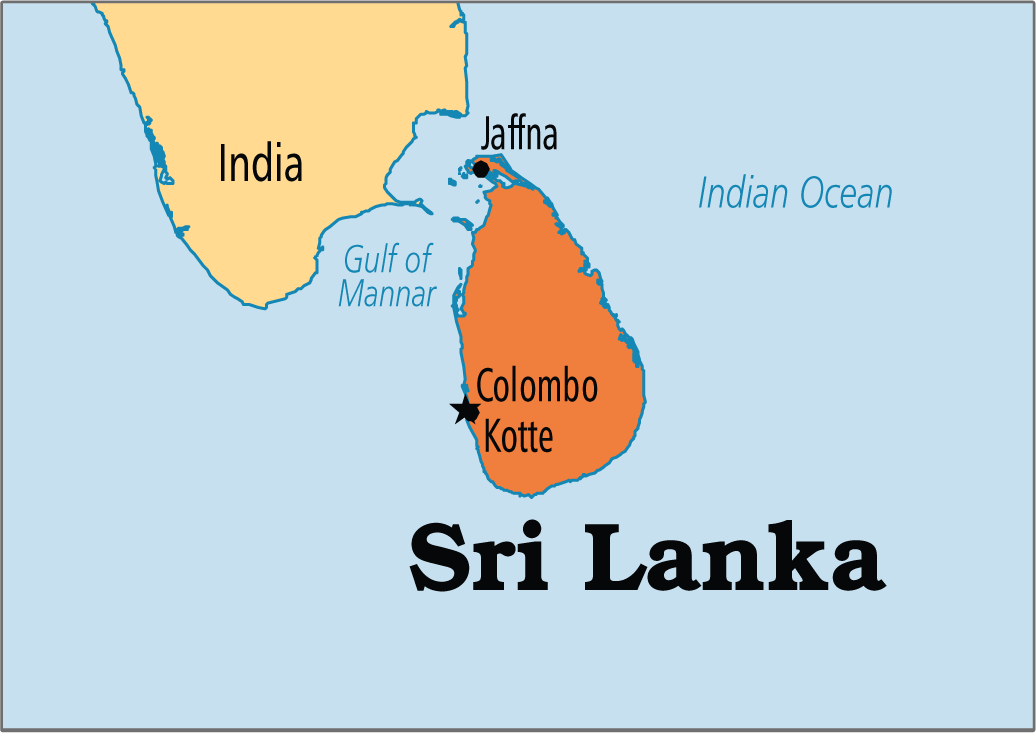China’s New Project in Sri Lanka | 09 Feb 2021
Why in News
Recently, a Chinese company has won a contract to set up hybrid wind and solar energy projects on three Sri Lankan islands off the northern Jaffna peninsula 45 km from Rameswaram in Tamil Nadu.
- Asian Development Bank (ADB) will fund the project, which will come up on Delft, Nainativu and Analativu, three islands in the Palk Strait off Jaffna peninsula.
Key Points
- About the Islands:
- Delft, the largest of the three islands, is the closest to Rameswaram, Tamil Nadu, which lies to the island’s south west.
- Between the two is Kachchativu, the tiny island that India ceded to Sri Lanka in 1974.
- The waters around these islands are an area of contest and rivalry between Tamil Nadu and Jaffna fishers.
- The matter has been on the bilateral agenda for decades.
- India and Sri Lanka agreed to set up a Joint Working Group (JWG) on Fisheries in 2016 between the Ministry of Agriculture and Farmers Welfare of India and Ministry of Fisheries and Aquatic Resources Development of Sri Lanka as the mechanism to help find a permanent solution to the fishermen issue.
- Delft, the largest of the three islands, is the closest to Rameswaram, Tamil Nadu, which lies to the island’s south west.
- Sri Lanka’s Stand:
- It cannot be blamed for this decision, because the project is backed by the ADB, which has its “own procurement guidelines that should be followed by the borrower”.
- India’s Concern:
- The project site’s proximity to the Indian coastline.
- Chinese presence in the vicinity is not welcomed especially when India already has many unresolved issues with China.
- This deal came at a time when India’s confrontation with China in Ladakh is yet to be resolved.
- Recently, the Sri Lankan government cancelled the contract with India and Japan for the Eastern Container Terminal (ECT).
- The tripartite agreement, signed by India, Sri Lanka and Japan, proposed to develop the ECT, which is located at the newly expanded southern part of the Colombo Port.
- For India, the ECT deal was important as around 70% of transhipment that takes place through it is India-linked. The ECT is also considered more strategic than any other in Colombo Port.
- The project site’s proximity to the Indian coastline.
- India’s Stand:
- India had lodged a strong protest with the Sri Lankan government on the contract to the Chinese company.
- In 2018, India voiced concern over China’s USD 300 million housing project for war-affected areas, accusing the Resettlement Ministry [of the former government] of holding an “opaque” bidding process.
- The project was eventually dropped.
- In 2018, India voiced concern over China’s USD 300 million housing project for war-affected areas, accusing the Resettlement Ministry [of the former government] of holding an “opaque” bidding process.
- India had lodged a strong protest with the Sri Lankan government on the contract to the Chinese company.
China’s Rising Influence in South Asia
- Recent Initiative:
- In January 2021 China held its third multilateral dialogue virtually with countries from South Asia to take forward closer cooperation on fighting Covid-19 and coordinating their economic agendas, reflecting a new approach in Beijing’s outreach to the region.
- Other Initiatives:
- According to the American Enterprise Institute’s China Global Investment Tracker, China has committed around 100 billion USD in the economies of Afghanistan, Bangladesh, the Maldives, Pakistan, Nepal and Sri Lanka.
- China is now the largest overseas investor in the Maldives, Pakistan, and Sri Lanka.
- According to the American Enterprise Institute’s China Global Investment Tracker, China has committed around 100 billion USD in the economies of Afghanistan, Bangladesh, the Maldives, Pakistan, Nepal and Sri Lanka.
- Concerns for India:
- Security Concerns:
- Growing cooperation between Pakistan and China.
- Increasing nexus between Nepal and China.
- Acceptance to China-Pakistan Economic Corridor by south asian countries.
- Leadership Roles in South Asia:
- It shows increasing chinese presence in south asia and its acceptance by the countries as a torch bearer for the region which India wants for itself.
- Economic Concerns:
- Over the past decade, China has replaced India as the major trading partner of several South Asian countries.
- For instance, the share of India’s trade with Maldives was 3.4 times that of China’s in 2008. But by 2018, China’s total trade with Maldives slightly exceeded that of India.
- China’s trade with Bangladesh is now about twice that of India. China’s trade with Nepal and Sri Lanka still lags India’s trade with those countries but the gap has shrunk.
- Security Concerns:
Way Forward
- India does not have the economic capacity as China. Thus it should cooperate with China for the development of these countries such that fruits of development collectively reach South Asia. Further India should invest in countries where China falls short and maintain its good will in South Asia and prevent these nations from slipping off from India’s Influence.
- Along with strongly condemning the plans for extension of the China-Pakistan Economic Corridor, India also needs to focus more on its traditional and cultural ties to improve relations with its neighbours.

